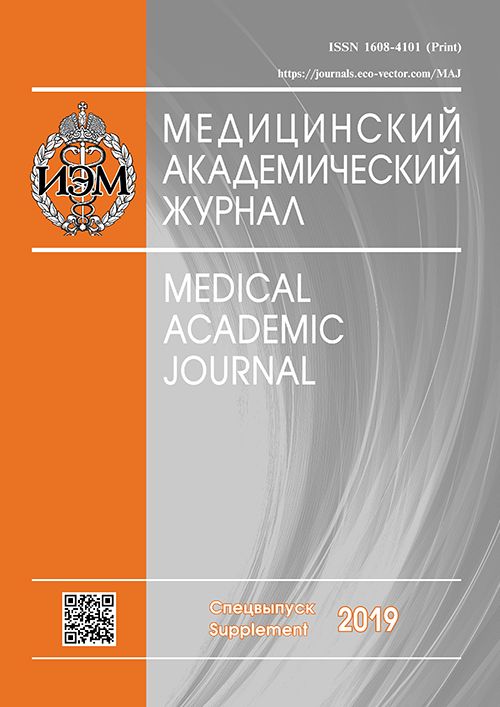THE CHARACTER OF SYSTEMIC CHANGES IN ADAPTIVE AND INNATE IMMUNE RESPONSE IN PATIENTS WITH MULTIPLE SCLEROSIS
- Authors: Andreeva II1, Sizyakina LP1, Goncharova ZA1
-
Affiliations:
- Rostov State Medical University, Rostov-on-Don
- Issue: Vol 19, No 1S (2019)
- Pages: 58-60
- Section: Articles
- Published: 15.12.2019
- URL: https://journals.eco-vector.com/MAJ/article/view/19324
- ID: 19324
Cite item
Abstract
The article presents the results of a comprehensive analysis of the parameters of innate and adaptive immunity in 85 patients with recurrent remitting multiple sclerosis (MS) with its exacerbation (54 people) and in conditions of persistent clinical remission (31 people). It is shown the signs of autoinflammation and increased reactivity of the T-link of adaptive immunity to be registered not only in exacerbation, but also in remission. The revealed changes determine the pathogenetic basis of MS progression and they should be taken into account when accompanying patients in remission to prevent clinical activation.
Keywords
Full Text
About the authors
I I Andreeva
Rostov State Medical University, Rostov-on-Don
L P Sizyakina
Rostov State Medical University, Rostov-on-Don
Z A Goncharova
Rostov State Medical University, Rostov-on-Don
References
- Christophi GP, Gruber RC, Panos M, et al. Interleukin-33 upregulation in peripheral leukocytes and CNS of multiple sclerosis patients. Clin. Immunol. 2012;142(3):308-319.
- Andreeva II, Sizyakina LP, Goncharova ZA. Inversion of the homeostatic properties of the immune system in multiple sclerosis. Medical Bulletin of the South of Russia. 2016;2:23-27.
- Martinez NE, Karlsson F, Sato F, et al. Protective and Detrimental Roles for Regulatory T Cells in a Viral Model for Multiple Sclerosis. Brain Pathol. 2014;24(5):436-451.
- Mc Donald WI, Compston A, Edan G, et al. Recommended Diagnostic Criteria for Multiple Sclerosis: Guidelines from the International Panel on the Diagnosis of Multiple Sclerosis. Ann Neurol. 2001;50:121-127.
Supplementary files







